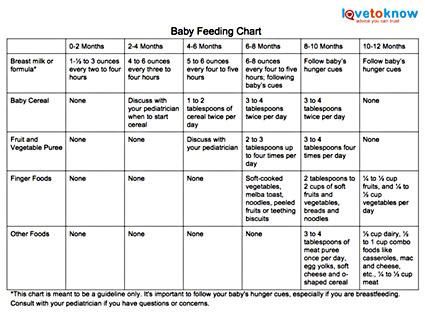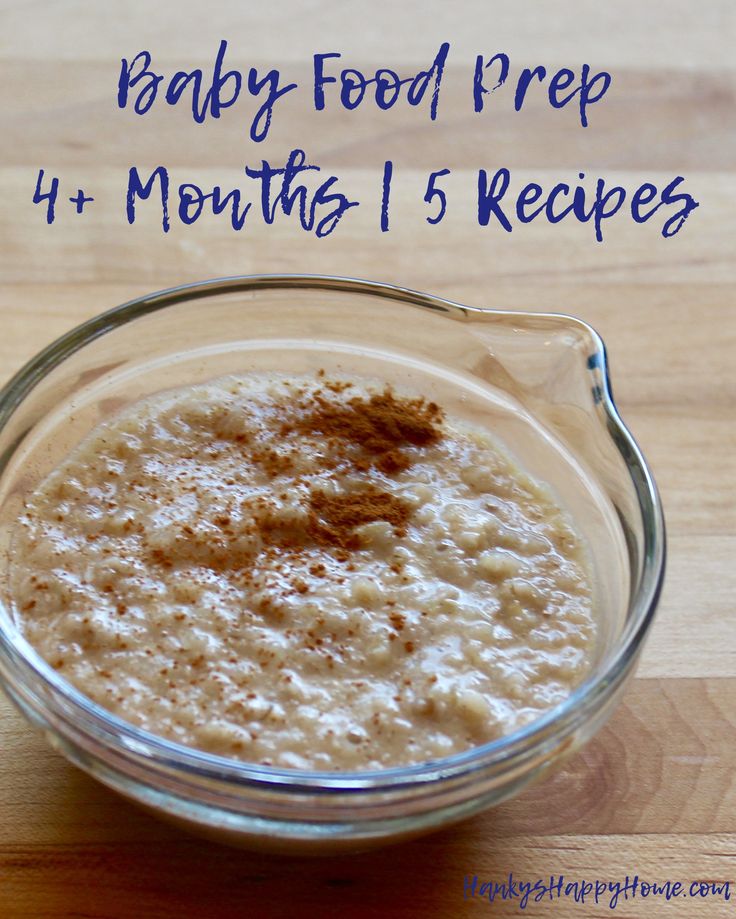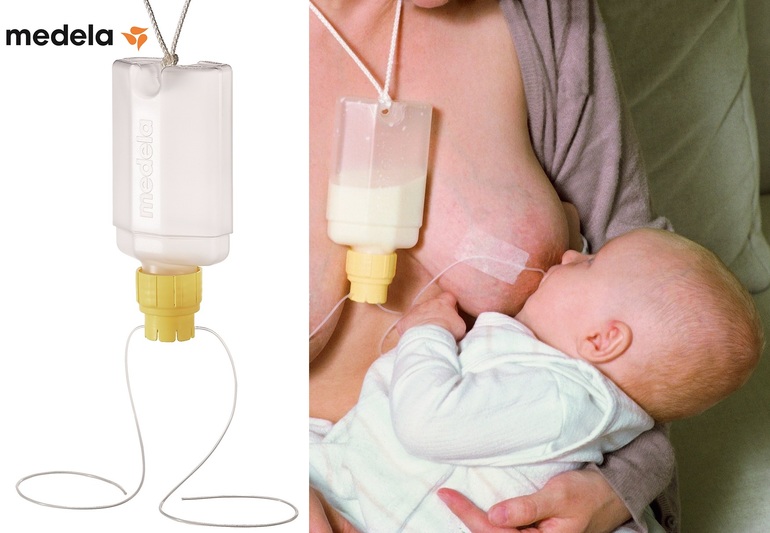List of solids to feed baby
Do's and Don'ts for Baby's First Foods
Breastfeeding has been shown to improve infant, child and maternal health outcomes and help control healthcare costs, but how long should breastfeeding last and when should parents introduce solid foods?
The Dietary Guidelines for Americans recommend exclusive breastfeeding, meaning the infant receives only breast milk, during the first six months of life for optimal nutrition and health benefits.
Once solid foods are introduced, health professionals recommend continuing breastfeeding through 12 months of age and, after that, as desired by mother and baby. Introducing your baby to solid foods is an exciting milestone. When you start introducing children to the world of solid foods, you are helping them shape their relationship with food and establish a healthy eating style. The timing for introducing solid foods will depend on the infant, but it is not recommended before the age of four months or after the age of six months.
Not sure how to get your baby started on solid foods? Consider these helpful tips.
Is Your Baby Ready to Transition?
Each child's readiness for solid food depends on their own rate of development. Signs a baby may be ready to start solid foods include sitting up with minimal support, demonstrating good head control, bringing objects to the mouth or grasping at small objects. Check with your pediatrician before starting solid foods.
Getting Started With Solids
Solid foods may be introduced in any order. However, puréed meats, poultry, beans and iron-fortified cereals are recommended as first foods, especially if your baby has been primarily breastfed, since they provide key nutrients. Only one new single-ingredient food should be introduced at a time.
Softer textures are very important when first introducing foods. Infants usually start with pureed or mashed foods around six months. As infants develop chewing and motor skills, they are able to handle items like soft pieces of fruit and finger foods. As the child ages, a variety of healthful foods is encouraged.
As the child ages, a variety of healthful foods is encouraged.
Weaning From Breastfeeding
When deciding if you should wean your baby to a bottle or a cup, consider their developmental readiness. Between 7 and 8 months, most infants will drink small amounts of liquid from a cup or a glass when someone else holds it. Older babies and toddlers often have the coordination to drink fluids from a cup by themselves.
If your baby is under 12 months of age and you are not continuing to breastfeed, wean from breast milk to iron-fortified infant formula. If your baby is 12 months or older, whole cow’s milk is appropriate.
Food Safety Do’s and Don’ts
Food safety concerns for infants and toddlers include food allergies, choking and risks for foodborne illness. Keep the following safety tips in mind:
Do talk with your pediatrician about the risk of food allergies. Introducing one new food at a time, every several days, allows time to monitor for allergic reactions.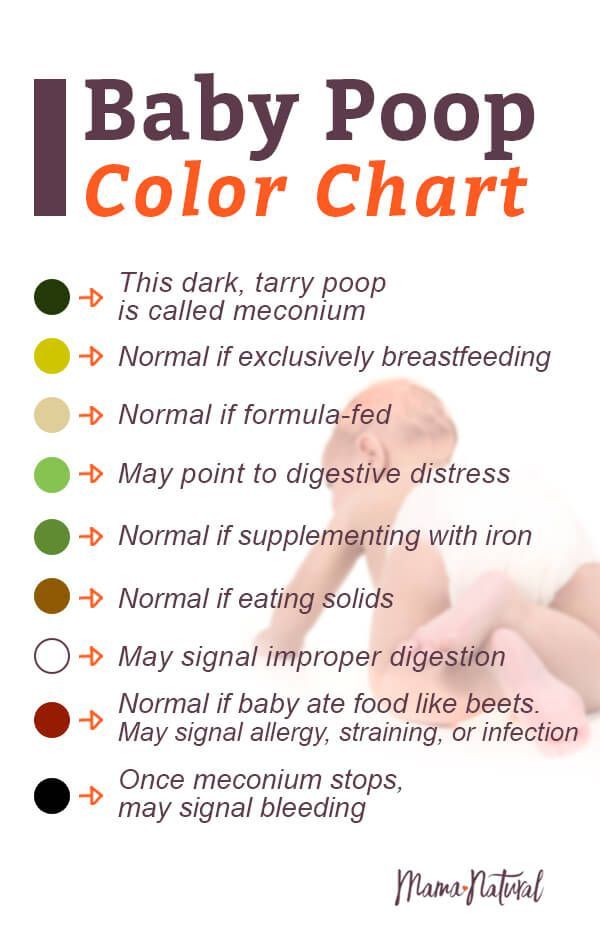 Current evidence does not indicate needing to wait beyond 4 to 6 months before introducing potential allergy-causing foods such as eggs, dairy, soy, peanuts and fish. In fact, introducing peanut-containing foods as early as 4 to 6 months of age may help prevent a peanut allergy. The Dietary Guidelines for Americans recommends introducing potentially allergenic foods when other complementary foods are introduced to an infant’s diet. Parents with concerns about food allergies should discuss how to include these foods with their pediatrician.
Current evidence does not indicate needing to wait beyond 4 to 6 months before introducing potential allergy-causing foods such as eggs, dairy, soy, peanuts and fish. In fact, introducing peanut-containing foods as early as 4 to 6 months of age may help prevent a peanut allergy. The Dietary Guidelines for Americans recommends introducing potentially allergenic foods when other complementary foods are introduced to an infant’s diet. Parents with concerns about food allergies should discuss how to include these foods with their pediatrician.
Don’t feed your baby solid foods from a bottle. It can be a choking hazard and despite a popular misconception, putting cereal in a baby's bottle won't help with sleeping through the night. Other foods that are considered to be choking hazards are listed below.
Do supervise your child while eating. Infants should be able to sit upright and face forward when you first introduce solid foods. This makes swallowing easier and choking less likely.
Don’t feed directly from the jar of food but instead spoon some food into a separate dish first. Feeding directly from the jar may introduce bacteria from your baby's mouth to the spoon and back into the food, creating a food safety issue.
Don’t feed honey to children under 12 months of age due to the risk of foodborne illness.
Examples of appropriate solid foods listed by age:
6 months:
- Well-cooked and pureed meat, poultry or beans
- Ground, cooked, single-grain cereal or infant cereal with breast milk or formula
- Cooked and pureed vegetables
- Mashed banana or avocado
9 months:
- Well-cooked, minced or finely chopped meat, poultry or beans
- A variety of cooked vegetables cut into small, ½ inch pieces, such as squash and green beans
- Sliced and quartered bananas or small pieces of other soft fruits
12 months:
- Soft, shredded meat, poultry or fish
- Small pieces of cooked vegetables
- Small pieces of soft, easy to chew fruits
- Mixed food dishes the family is eating in appropriately sized pieces
Not recommended for those under 4 years of age due to the risk of choking:
- Popcorn and whole kernel corn
- Nuts and seeds
- Large chunks of meat, poultry and cheese
- Candy, gum drops and jelly beans
- Hard, raw fruits or vegetables such as apples, celery and carrots
- Whole grapes and cherry tomatoes, unless cut into quarters
- Hot dogs, unless cut into strips and age appropriate, bite-size pieces
- Sticky foods, such as peanut butter, which can get stuck in the back of the mouth – peanut butter is okay if spread thinly on bread
For toddlers and preschoolers, chop grapes, meat, poultry, hot dogs and raw vegetables and fruits into small pieces (about ½ inch or smaller).
Nurturing Healthy Relationships with Food
Establishing a positive feeding relationship during infancy can have lifetime benefits. Keep in mind that children are responsible for how much and whether they eat so always wait for your baby to pay attention to each spoonful before you feed them. Don't be afraid to let your baby touch the food in the dish and on the spoon. You wouldn't want to eat something if you didn't know anything about it, would you? In addition, know the cues that your baby is done eating. A common cue babies are full is head turning.
Whatever happens, don't get discouraged and enjoy the experience. With a little patience and creativity, you can make your baby's first solid food eating experience fun for everyone involved!
Tags
Find a Nutrition Expert
Looking for credible nutrition information and recommendations? The Academy of Nutrition and Dietetics' network of credentialed food and nutrition practitioners are ready to help!
See Directory
When to Start Baby Food
Starting solids is an exciting and important milestone in baby’s development—one that not only opens them up to a brand-new world of flavors and textures, but also puts them on the right path to growing healthy and strong. Here’s what you need to know about how and when to start baby food for a smooth transition.
Here’s what you need to know about how and when to start baby food for a smooth transition.
In this article:
When to start baby food
How to start baby on solids
Best first foods for baby
Introducing allergenic foods
When to Start Baby Food
Knowing when to start baby food is both crucial and tricky. Starting baby on solids too early means you might increase the risk of choking, obesity and bellyaches, but introducing solids too late means you might slow baby’s growth and encourage an aversion to solid foods, among other conditions. Fortunately, doctors have zeroed in on a sweet spot for starting baby food, which is sometime between 4 and 6 months of age—though, ideally, baby should be receiving their nutrition exclusively from breast milk until the six-month mark, according to the American Academy of Pediatrics (AAP). How to tell if it’s time for starting solids for your little one? Baby will give you clues, including:
• Baby can sit in a high chair comfortably on their own. This is a major sign in terms of when to start baby food, says Lauren Kupersmith, MD, a pediatrician at Hassenfeld Children’s Hospital at NYU Langone in New York City. It means baby can hold their head up and doesn’t need to be propped up to stay in the upright position, which is important to avoid choking.
This is a major sign in terms of when to start baby food, says Lauren Kupersmith, MD, a pediatrician at Hassenfeld Children’s Hospital at NYU Langone in New York City. It means baby can hold their head up and doesn’t need to be propped up to stay in the upright position, which is important to avoid choking.
• Baby looks interested at mealtime. Babies likes to mimic what we do, so if your child likes to sit up like a big kid and watch you eat, then by all means let them try eating too.
• Baby can move food to the back of their throat to swallow. But if baby tends to push the food out of their mouth—not because they don’t like it, but because they can’t seem to get the food to where it needs to go—hold off on starting solids.
How to Start Baby on Solids
At 4 to 6 months, most of baby’s nutrition will still come from breast milk or formula, so don’t worry if baby doesn’t like eating food right away. Introducing solids is a gradual process, and every baby learns in their own time.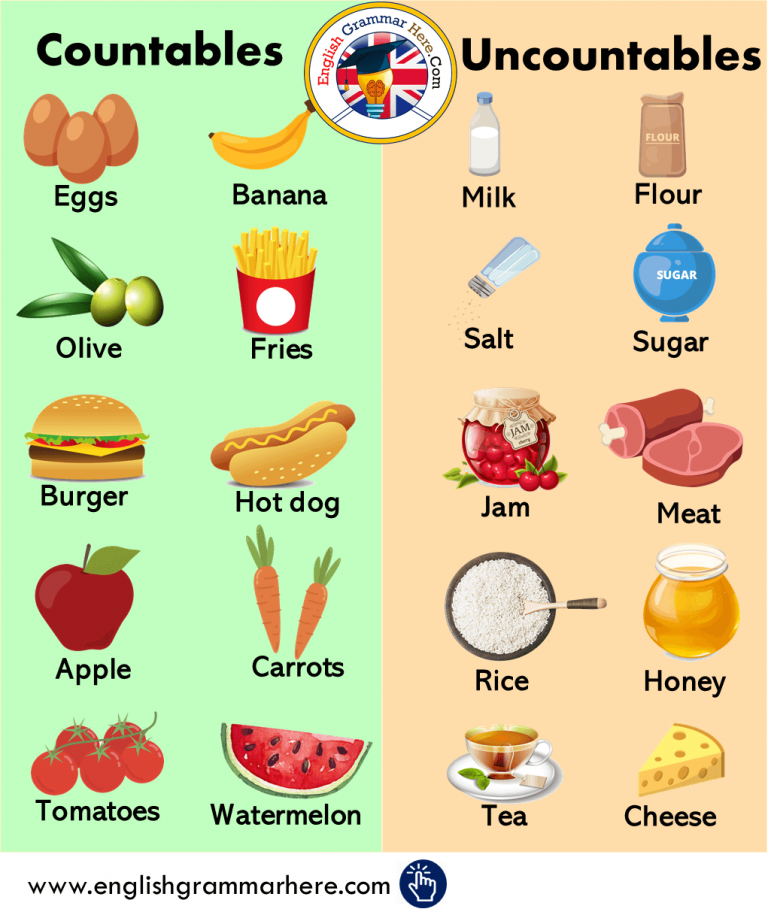 Here are some general guidelines for how to start baby on solids:
Here are some general guidelines for how to start baby on solids:
• Feed baby with a spoon. Letting your child go at it with their hands may seem tempting (and super-cute), but it’s best that they learn the right way from the get-go. (And even then, be prepared to clean up more than a few messes!) Also, never put cereal (or any other food) in baby’s bottle—it’s a choking hazard.
• Start slowly. When introducing solids, a half spoonful will do at first—you may even want to talk baby through it (“Yummy!”). To make it easier for baby to get accustomed to the idea of swallowing solids, start mealtime with a little breast milk or formula, then offer some food (again, no more than a half teaspoon at a time) and finish off with more breast milk or formula. If baby cries or turns away when you present the spoon, try again some other time. Start off with introducing solids at one meal a day, then slowly work your way up. The morning is a good place to start, since baby is often hungriest at that time. When starting solids, baby typically won’t eat more than an ounce or two in one sitting.
When starting solids, baby typically won’t eat more than an ounce or two in one sitting.
• Try new foods more than once. Since babies’ tastes will evolve, you may need to try a food 20 times before a baby actually likes it, says Kupersmith.
• Stick with the same food for three days before trying another one. This makes it easy to track whether baby is allergic to a particular food.
• Try foods in different forms. If baby doesn’t like pureed food, try it mashed. After all, baby is learning about new textures as well as new tastes. It may be a case of trial and error until you find a winner.
Best First Foods for Baby
Got baby safely strapped into the high chair and bib? You’re ready to finally start feeding baby solids! There aren’t any official food rules for babies starting solids, and there’s no scientific evidence suggesting you should introduce one type of food before another, assuming the foods aren’t choking hazards. Nevertheless, baby cereal (such as oatmeal, rice and barley) is an “easy training food,” says Kupersmith, which is why it’s often recommended as baby’s first food; you can always mix it with more milk to build up to a thicker consistency. Many doctors also recommend starting vegetables before fruits, but there’s no evidence that this would make babies like vegetables more when they grow up—babies innately love sweets, and the order of introducing solids to baby doesn’t change that.
Nevertheless, baby cereal (such as oatmeal, rice and barley) is an “easy training food,” says Kupersmith, which is why it’s often recommended as baby’s first food; you can always mix it with more milk to build up to a thicker consistency. Many doctors also recommend starting vegetables before fruits, but there’s no evidence that this would make babies like vegetables more when they grow up—babies innately love sweets, and the order of introducing solids to baby doesn’t change that.
So why not simply start introducing solids with something you think baby will like? Here are a few common first foods for baby that are healthy and easy to eat (and, in the case sweet potato and banana, also easy to digest). Whatever you decide to feed baby, mash it with a fork or puree before serving whenever introducing solids.
- Baby cereal, such as oatmeal, rice, barley
- Sweet potato
- Banana
- Avocado
- Apples
- Pears
- Green beans
- Butternut squash
If your child has been breastfeeding, check with your pediatrician about getting a jump on pureed chicken or beef when you’re starting solids. These foods contain easily absorbable forms of iron and zinc, which baby needs by 4 to 6 months, according to the AAP.
These foods contain easily absorbable forms of iron and zinc, which baby needs by 4 to 6 months, according to the AAP.
At around 9 months, baby should have already worked their way up to a variety of foods, including cereal, vegetables, fruits, meats, eggs and fish (see below regarding the last two). (Keep in mind, though, that baby will still get the majority of their nutrients from breast milk or formula until age one.) By now, baby will probably settle on three meals a day along with two snacks. Let them consume about 4 ounces of solids at each meal (equivalent to a small jar of strained baby food) and about half that amount for each snack.
Save honey and cow’s milk for after baby’s first birthday—there’s a risk for infant botulism with honey (a type of bacterial poisoning), and baby’s tummy isn’t prepared to digest large amounts of cow’s milk until they’re about one year old. Avoid adult processed foods and foods that are choking hazards (such as sticky foods, like large gobs of peanut butter; hard foods that are difficult to gum, like raw vegetables, nuts, seeds and popcorn; and round, slippery foods that haven’t been cut up, like grapes and cherry tomatoes).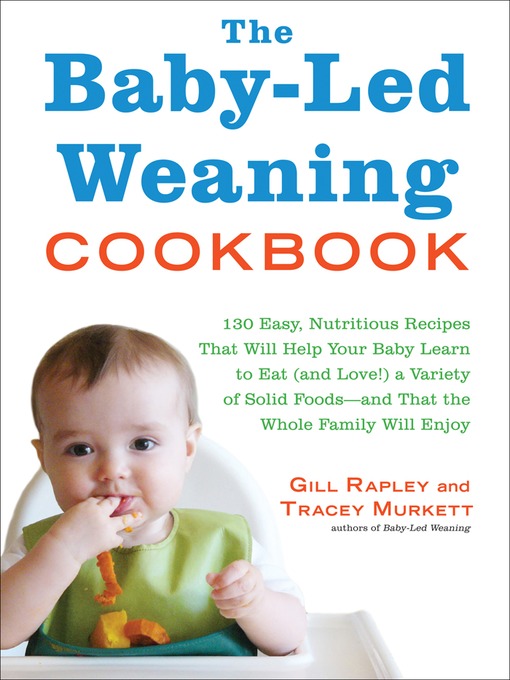 Instead, the first foods for baby, and those in the months that follow, should be soft and served mashed, pureed or (once baby seems ready to move up from the really mushy stuff) cut up into really little bits. “There’s pretty much free reign at that point,” Kupersmith says.
Instead, the first foods for baby, and those in the months that follow, should be soft and served mashed, pureed or (once baby seems ready to move up from the really mushy stuff) cut up into really little bits. “There’s pretty much free reign at that point,” Kupersmith says.
Introducing Solids Chart
Hesitant about improvising your first foods for baby? That’s okay too. If you prefer an “introducing solids chart” to help you plan out baby’s path, the guide below can come in handy.
Image: The Bump
Introducing Allergenic Foods
Much of the confusion around when to start baby food stems from questions concerning allergenic foods. These are foods that babies are most often allergic to. The major culprits include dairy, eggs, fish, peanuts and tree nuts. In the past, parents were advised to hold off on exposing baby to these foods, but now doctors recommend introducing them early, often and in age-appropriate format, which means starting off with purees and soft textures.
“Dairy is an easy starting point, given options such as yogurt and cheese,” says David Stukus, MD, director of the Food Allergy Treatment Center at Nationwide Children’s Hospital and a spokesperson for the American College of Allergy, Asthma, & Immunology. You can also try scrambled eggs in small amounts, although baby may not be too pleased with the texture at first.
As far as peanut products go, the National Institutes of Health issued new guidelines in 2017 that encourage parents of children at high risk for peanut allergies to incorporate them into baby’s diet at 4 to 6 months of age. Giving these babies peanut products before the age of one actually decreases their risk of developing a peanut allergy before age 5 by 81 percent, compared to kids who are introduced to peanuts later in life. Parents of kids without the food allergy risk can start peanut products whenever they’d like, as long as the nuts are in an age-appropriate form: Peanut butter can be thinned out with water or mixed into a fruit or vegetable puree, and peanut powder can also be mixed into cereal and fruits. Don’t give whole peanuts or pieces of peanuts, since they’re a choking risk.
Don’t give whole peanuts or pieces of peanuts, since they’re a choking risk.
Allergic reactions to food are never just a fluke; they will happen with every exposure. Symptoms can range from mild (such as a rash or vomiting) to severe (such as trouble breathing). If baby has a food allergy, you’ll notice a reaction within minutes or up to two hours after eating the problematic food, Stukus says. If the symptoms are severe, call 911 right away. Otherwise, talk to your pediatrician; she can help confirm whether it’s an allergy or some other type of condition (such as a viral illness).
Expert bios:*
Lauren Kupersmith, MD, IBCLC, is a pediatrician and clinical instructor at Hassenfeld Children’s Hospital at NYU Langone in New York City, as well as a certified lactation consultant. She earned her medical degree from New York Medical College in 2005.
David Stukus, MD, is the director of the Food Allergy Treatment Center at Nationwide Children’s Hospital, an associate professor of pediatrics in the division of allergy and immunology and a spokesperson for the American College of Allergy, Asthma, & Immunology. He earned his medical degree from University of Pittsburgh School of Medicine in 2002.
He earned his medical degree from University of Pittsburgh School of Medicine in 2002.
Updated January 2020
Please note: The Bump and the materials and information it contains are not intended to, and do not constitute, medical or other health advice or diagnosis and should not be used as such. You should always consult with a qualified physician or health professional about your specific circumstances.
What can a child eat at 11 months, an approximate menu for a week with recipes and a diet
At 11 months, the child already eats various foods. In order for the baby to grow up healthy, and his organs and systems to work harmoniously, only healthy dishes should be on the menu. We will tell you more about what to feed your baby at 11 months.
Peculiarities of the child's diet
The list of allowed foods at 11 months is quite diverse, so mothers have the opportunity to fantasize in the kitchen and show their culinary skills.
- Vegetables.
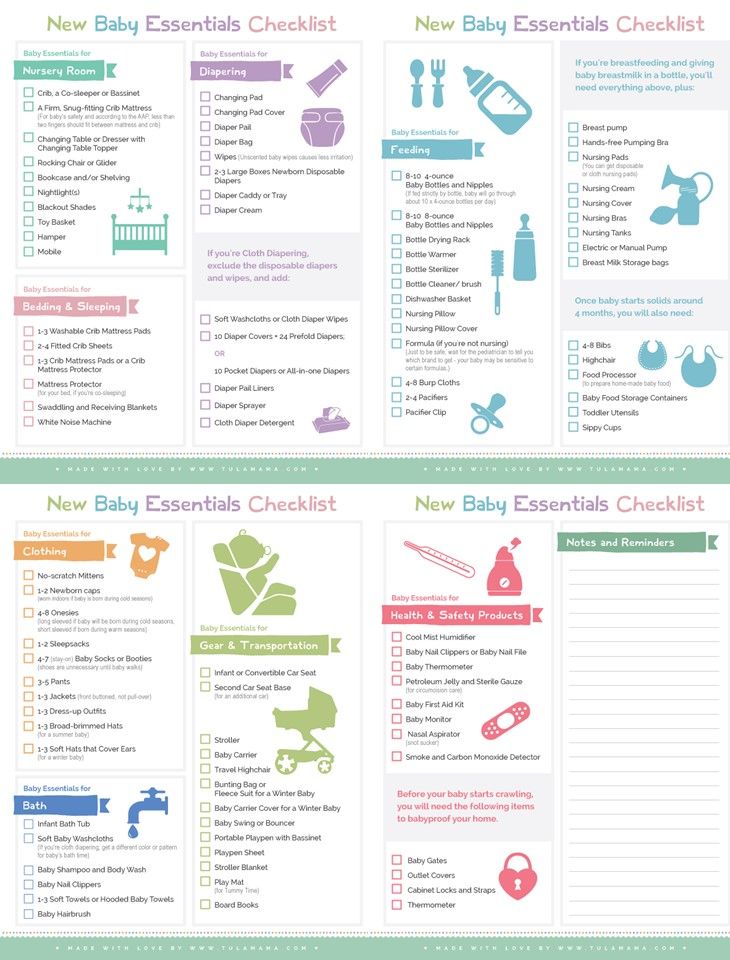 Vegetables are the foods that start complementary foods for a baby. At this age, the mother cooks soups, stews for the baby based on them, prepares mashed potatoes, adds them to cereals, mixes them with meat, fish, squeezes juice. Here are the vegetables the baby eats at 11 months: zucchini, cabbage (cauliflower, Brussels sprouts, broccoli), carrots, onions, potatoes, pumpkin, beets, green peas, asparagus. At this age, he can eat fresh vegetables (with the peel removed), chopped on a coarse grater and seasoned with sunflower oil, sour cream. A little finely chopped greens (dill, parsley) are also added to such a vitamin salad. You can introduce a baby at 12 months of age with white cabbage. Start giving it with a minimum amount and only in boiled form. You can add cabbage to soups, stews, mashed potatoes, cutlets. Many pediatricians recommend starting to feed the baby with eggplant. However, caution should be exercised here, as this vegetable contains solanine. To reduce its amount, blue ones need to be soaked in salted water before processing.
Vegetables are the foods that start complementary foods for a baby. At this age, the mother cooks soups, stews for the baby based on them, prepares mashed potatoes, adds them to cereals, mixes them with meat, fish, squeezes juice. Here are the vegetables the baby eats at 11 months: zucchini, cabbage (cauliflower, Brussels sprouts, broccoli), carrots, onions, potatoes, pumpkin, beets, green peas, asparagus. At this age, he can eat fresh vegetables (with the peel removed), chopped on a coarse grater and seasoned with sunflower oil, sour cream. A little finely chopped greens (dill, parsley) are also added to such a vitamin salad. You can introduce a baby at 12 months of age with white cabbage. Start giving it with a minimum amount and only in boiled form. You can add cabbage to soups, stews, mashed potatoes, cutlets. Many pediatricians recommend starting to feed the baby with eggplant. However, caution should be exercised here, as this vegetable contains solanine. To reduce its amount, blue ones need to be soaked in salted water before processing. Be sure to peel the skin so that the baby does not choke while eating. Eggplants are included in soups, stews and vegetable purees. Allergic children and those who have problems with the digestive tract should not eat blue ones yet.
Be sure to peel the skin so that the baby does not choke while eating. Eggplants are included in soups, stews and vegetable purees. Allergic children and those who have problems with the digestive tract should not eat blue ones yet. - Fruit. Fruits are the main source of vitamins and trace elements necessary for a growing organism. At 12 months of life, the baby has already met many fruits. 11 months is the age when you can introduce your child to pomegranate and citrus fruits. It is better to give preference at the initial stage to tangerines, grapefruit and orange. You need to start with a small slice. If no adverse reactions are observed, let the baby taste pomegranate, orange, tangerine juice. They should be diluted with water in a ratio of 1:3. After that, other fruit juices (apple, pear, peach) can be added to drinks. On the basis of fruits, salads, compotes, kissels are prepared, they are mixed with cottage cheese, porridge.
- Meat.
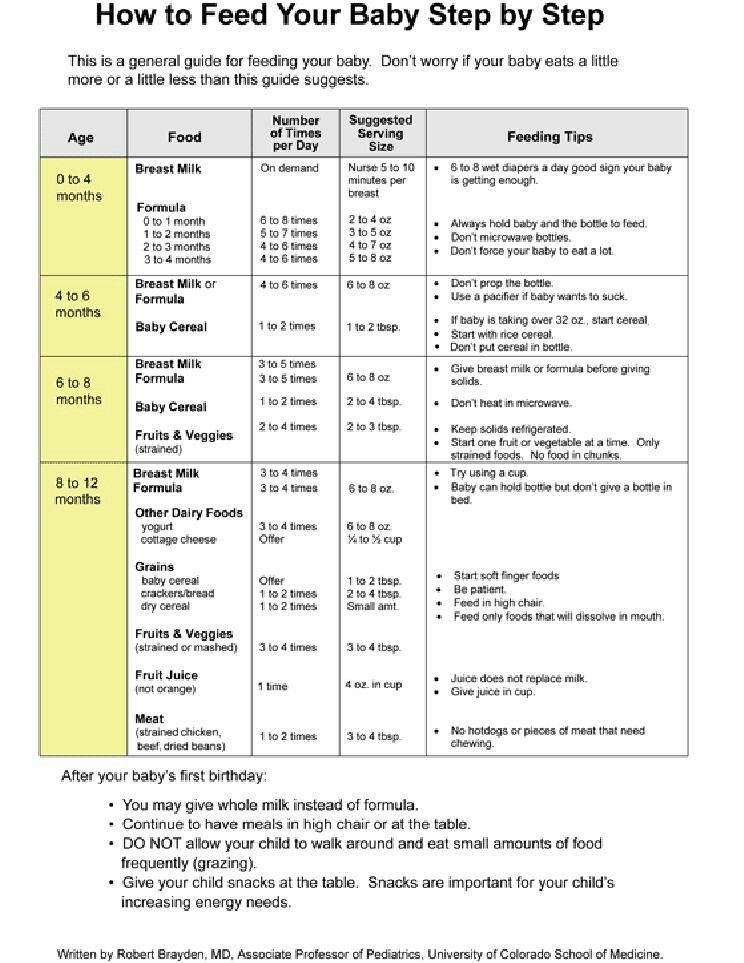 In the menu of a child on artificial feeding, as well as on natural, there is already meat of turkey, rabbit, veal, beef, horse meat, lean chicken and pork. At this stage, the baby can already be safely introduced to the liver, heart and tongue. Meat puree is added to soups, cereals, vegetable puree. Meatballs, cutlets, meatballs, dumplings are boiled on its basis, a tender soufflé is made. It is recommended to cook meat for a couple, stew. Frying and baking at this age are excluded. It is forbidden to offer the baby sausages, sausages, lard.
In the menu of a child on artificial feeding, as well as on natural, there is already meat of turkey, rabbit, veal, beef, horse meat, lean chicken and pork. At this stage, the baby can already be safely introduced to the liver, heart and tongue. Meat puree is added to soups, cereals, vegetable puree. Meatballs, cutlets, meatballs, dumplings are boiled on its basis, a tender soufflé is made. It is recommended to cook meat for a couple, stew. Frying and baking at this age are excluded. It is forbidden to offer the baby sausages, sausages, lard. - Fish. Enter in the menu of a child on breastfeeding, as well as on artificial, you need only low-fat fish varieties. These are pollock, flounder, hake, pike perch, cod, sea bass. It is better to wait a little with bold and fatty varieties, although according to some recommendations, such fish can also be introduced into the diet in small quantities. Processing of fish should be only steam. Preference should be given to fresh fish.
 Fish-based dishes are still served twice a week. On other days, it is recommended to offer the baby meat. From fish you can make cutlets, dumplings, soufflés, add to soups, vegetable purees.
Fish-based dishes are still served twice a week. On other days, it is recommended to offer the baby meat. From fish you can make cutlets, dumplings, soufflés, add to soups, vegetable purees. - Dairy products. Fermented milk products contain bacteria beneficial for the intestinal microflora, which contribute to the smooth functioning of the digestive system. Therefore, such products must be included in the diet of crumbs daily. Dairy products should not replace full feeding. Kefir, yogurt, cottage cheese are served only in addition to the main dishes. At 11 months, the child can be safely introduced to sour cream. It is allowed to add the product to vegetable salads, flavor it with soups, borscht, water meatballs, meatballs, add to casseroles, etc. Yogurt, sour cream and cottage cheese can be mixed with fruits and berries. Serve best for breakfast and during the fourth meal. An important condition is the use by the baby of fermented milk products prepared independently or purchased in the children's kitchen.

- Berries. Berries must be included in the diet of a child at 12 months of age. The main condition is the use of only seasonal berries. At this age, the baby has already tried: gooseberries, currants (black, yellow, red). Some pediatricians recommend expanding the baby's diet and introducing him to watermelon, strawberries, cherries, cherries and raspberries (unless, of course, you are confident in the quality and freshness of the berries). Just be sure to watch the reaction of the crumbs. The kid will definitely love berries if you add them to cottage cheese, porridge. As for fruit drink, before serving it should be diluted with water in a ratio of 1: 3.
- Drinks. During the day, the baby must drink clean water. To avoid anemia and beriberi, the baby needs to drink juices based on fruits and berries, compotes, including dried apricots, prunes, raisins, as well as jelly, fruit drinks, children's herbal teas. In no case should you give a child at 11 months of age black tea, store-bought juices, drinks sweetened with sugar or honey.
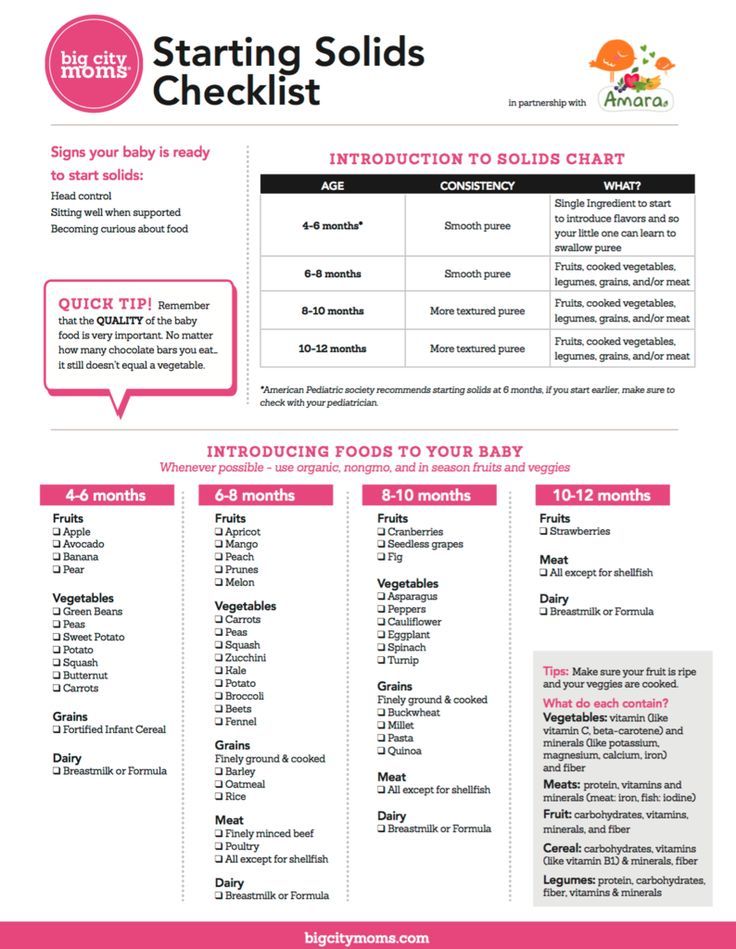 This can significantly harm the health of the baby.
This can significantly harm the health of the baby. - Kashi. Porridges at 11 months are given the most diverse - at the discretion of the mother and depending on the taste preferences of the child. Porridges are boiled in water, mother's milk, artificial mixture. At the end, you can add a piece of butter. The kid will really like it if you put berries or pieces of fruit in the porridge.
What else can you give an 11 month old baby?
Here is a list of foods that should also be included in the diet of an 11-month-old baby.
- Yolk . Serve the yolk to the table (preferably from quail eggs) should be no more than 2 times a week.
- Raisin croutons, biscuits. Can be served daily.
- Oils. Butter and vegetable oils, extra virgin olive oil. Served every day.
- Green. Dill, parsley, celery. They are added to soups, salads, meat and fish dishes.
 May be served daily.
May be served daily.
Norms of foods in the diet of a child at 11 months
To determine the exact amount of food that a child at 11 months should consume per day, you should divide his weight by 9. So, if the baby weighs 10 kg, then on average, he consumes from 1100 to 1250 g. That is, the amount of food for each meal is at least 220-250 g. As for the amount of liquid consumed per day, it can also be easily calculated: 50 ml of liquid is needed per 1 kg of a child's weight. That is, at 10 kg of weight, the baby drinks 500 ml per day. Formula-fed babies should receive 20% more water than babies. The amount of liquid in hot weather increases by 10-20%. The recommended quantity of individual products is shown in the table.
| Vegetables | 200 g |
| Fruit | 110 g |
| Juice made from fruits, vegetables | 110 ml |
| Kefir or yogurt | 180-200 ml |
| Cereal porridge | 200 g |
| Cottage cheese (no more than 2-3 times a week) | 50 g |
| Meat | 80 g |
| Fish (twice a week) | 60 g |
| Vegetable and butter | by 5 g |
| Rusks, biscuits, bread | 10 g |
| Green | 5 g |
| Smetana | 1 tsp |
| Egg yolk (twice a week) | 1/2 |
Daily diet
It is worth noting that the diet of the crumbs remains the same, that is, five times a day.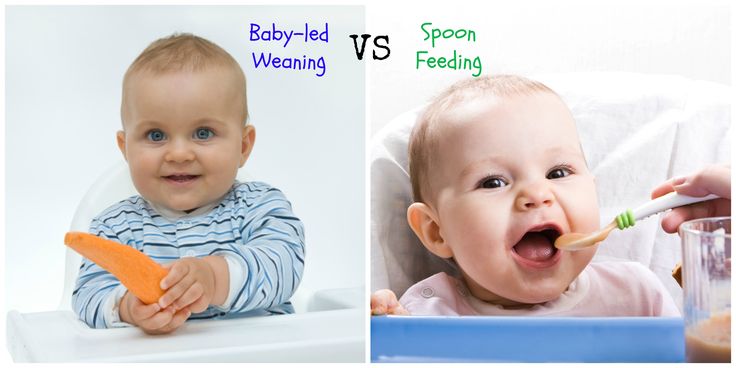 Breastfeeding or artificial feeding continues up to 1 year. Usually at this age, the baby requires his mother's breast or a bottle of formula in the evening or early in the morning, the rest of the time he eats only adult food. There is no need to supplement with breast milk or formula.
Breastfeeding or artificial feeding continues up to 1 year. Usually at this age, the baby requires his mother's breast or a bottle of formula in the evening or early in the morning, the rest of the time he eats only adult food. There is no need to supplement with breast milk or formula.
Important! There are no differences in the nutrition of breastfed babies and those who eat artificial formula. At 11 months, babies eat the same foods.
So, what can a baby eat at 11 months, what drinks are allowed to drink? Here is a table that shows the time of a meal and what foods can be offered at this meal.
| Breakfast 6.00-7.00 | Mother's milk or formula. |
| Late breakfast 10.00-11.00 | For breakfast, the baby is provided with easily digestible carbohydrates, that is, cereals - buckwheat, oatmeal, corn, rice. The choice in this case is huge. Be sure to fill the porridge with oil, diversify with berries. As an option - slices of fruit, pieces of pumpkin. Breakfast is also served with cottage cheese, kefir or yogurt. For dessert, the baby is offered fruit puree or juice from berries and fruits. As an option - slices of fruit, pieces of pumpkin. Breakfast is also served with cottage cheese, kefir or yogurt. For dessert, the baby is offered fruit puree or juice from berries and fruits. |
| Lunch 14.00-15.00 | Soup or puree of boiled vegetables with herbs, any cereal with vegetable oil. Meatballs, cutlets, pate or mousse, poured with sour cream. 2 times a week you need to give fish in the form of mashed potatoes or cutlets, steamed dumplings. Quarter of yolk, bread. Compote. |
| Dinner 18.00-19.00 | Porridge, fruit puree, kefir, yoghurt, fruit juice, biscuits or crackers with raisins. |
| Second dinner 22.00-23.00 | Mother's breast milk or formula milk. |
What changes have occurred in the diet
- The regimen remains the same - 5 meals, the interval between which is 4 hours. You should not transfer the baby to 3 or 4 meals a day, which entails an increase in the volume of one serving.
 This causes a disruption in the digestive system, which is not able to cope with such an amount of food.
This causes a disruption in the digestive system, which is not able to cope with such an amount of food. - At this age, the child already eats almost all foods from the adult table. The following are still banned: smoked meats, sausages, cow's milk, canned food, sweets, mushrooms, nuts, semi-finished products, black tea, etc.
- At 12 months of age, there is no need to grind food on a fine grater or with a blender. The child is already a happy owner of 4 (or maybe more) teeth, and therefore he is quite capable of chewing meat, fish, fruits and vegetables, mashed with a fork, cut into small slices, pieces (all the more it has a good effect on the development and functioning of the jaw muscles).
- Many babies still wake up at night, early in the morning and want their mother's breast or formula bottle. We recommend that you do not deny the child this pleasure yet and continue feeding up to 1 year.
- It's time to show the child how to hold the spoon and where to point it.
 The same applies to mugs with his favorite drinks.
The same applies to mugs with his favorite drinks.
What to do if the child does not eat well
There can be many reasons for poor appetite in a child - a recent illness, ignoring the taste preferences of the baby, coercion in the process of feeding, violations in the daily routine, snacking between main meals, teething. All of these factors should be considered by parents. What can be done?
- If a child refuses pumpkin soup or doesn't like meatballs at all, this is no reason to force him to empty his plate. The baby may develop an aversion to food. Then it will be very difficult to instill a love for adult food.
- Poor appetite may also be due to snacking. You should not give the crumbs cookies or crackers before the main meal. This may affect the child's appetite.
- It is very important for a good appetite to observe the daily routine. If you stick to the same schedule every day, then the child will develop the need to eat at the right time.

- Try to take into account the preferences of the child, include different foods in the menu, prepare new dishes, make them beautiful, then the baby's appetite will noticeably improve.
Video how to feed a baby at 11 months
- 50 g cauliflower;
- a quarter of a carrot;
- 50 g courgette without skin;
- sprig of dill;
- 50 g buckwheat.
Place a small pot of water on the stove. After boiling, throw well-washed buckwheat, chopped vegetables into the container. Boil for 10-15 minutes. Add chopped greens. Leave to sweat for another 2-3 minutes. Mash the vegetables with a fork. Add a teaspoon of olive oil, stir.
Vegetable stew
- marrow - 40 g;
- cauliflower - 40 g;
- broccoli - 30 g;
- quarter onion;
- a quarter of a carrot;
- 30 g peas.
Rinse the vegetables, peel them, cut into small cubes, divide the cabbage into florets and place in a heavy-bottomed dish. Add some water and simmer for about half an hour. Then add green peas and simmer over low heat for another 5-7 minutes. Drizzle with vegetable oil before serving.
Add some water and simmer for about half an hour. Then add green peas and simmer over low heat for another 5-7 minutes. Drizzle with vegetable oil before serving.
Borsch beets - 50 g;
- potatoes - 50 g;
- onion - a quarter;
- carrot - a quarter;
- sprig of parsley;
- sour cream - 1 tsp.
Fill a small saucepan with water and bring to a boil. Peel vegetables, wash, cut into small cubes. First put the beets in the water. Leave to simmer for 10 minutes, then toss in the rest of the vegetables. Boil for another 15 minutes. Add chopped greens, sweat for another 2-3 minutes. Serve the baby with sour cream.
Chicken cutlets with dill, onion
- chicken fillet - 100 g;
- onion - a quarter;
- egg;
- sprig of dill.
Turn the chicken fillet into minced meat, and the onion into a mush (can be finely chopped). Mix the ingredients, add the egg and chopped greens. Stir again. Treat with steam no more than 20-25 minutes.
Mix the ingredients, add the egg and chopped greens. Stir again. Treat with steam no more than 20-25 minutes.
Chicken quenelles
- chicken fillet - 100 g;
- white bread - 10 g;
- 2-3 st. l. breast milk;
- butter - 5 g.
Grind the fillet with a meat grinder or blender, add the egg. Place the bread in a bowl and pour in the milk. Put in the microwave. When the bread is soaked, add it to the minced meat along with softened vegetable oil. Stir. Form the quenelles with wet hands. Processing should be steam. Cooking time - 20-25 minutes.
Turkey meatballs with vegetables and rice groats
- fresh turkey fillet - 100 g;
- quarter onion;
- a quarter of one carrot;
- 50 g pumpkin without skin;
- rice - 40 g.
Cook rice until tender (10 minutes after boiling). Twist the fillet through a meat grinder. Chop the onion, pumpkin and carrot. Mix all products, make small balls. Put a saucepan or cauldron on the stove, put the meatballs, add water (to cover them). Cover the container with a lid. Simmer for 30 minutes. Serve with sour cream.
Chop the onion, pumpkin and carrot. Mix all products, make small balls. Put a saucepan or cauldron on the stove, put the meatballs, add water (to cover them). Cover the container with a lid. Simmer for 30 minutes. Serve with sour cream.
Hake cutlets with rice
- fresh hake (pollock) fillet - 100 g;
- egg yolk;
- white bread pulp;
- rice - 30 g.
Turn the fillet into minced meat, mix with pre-boiled rice. Add soaked bread and egg yolk. Combine the ingredients. Blind cutlets. Get ready for a couple. 15 minutes will be enough.
Pear basket with strawberries and raspberries
- one ripe pear;
- 20 g raspberries;
- 4-5 strawberries.
Rinse the pear, make a hole inside. Cut the strawberries into pieces and, together with the raspberries, place inside the pears. Put in the oven for a quarter of an hour.
You can invent various dishes from a variety of products, the main thing is to arrange them beautifully before serving.
The time for one-component purees is over. Now mom is free to experiment: there are a lot of products on the list of allowed products that can now be mixed, besides, the baby is already used to a denser consistency of dishes. So, what to feed a baby at 11 months?
What to feed
The daily menu of an 11-month-old baby ideally includes foods from all major groups of the food pyramid. Namely:
- Cereals . The baby can already have buckwheat, rice, corn, oatmeal, wheat and millet porridge. The approximate daily allowance for an eleven-month-old baby is 200 grams.
- Vegetables . Zucchini, broccoli, cauliflower and white cabbage, carrots, pumpkin, potatoes, beets, tomatoes, onions. A child can eat about 150 grams of vegetable dishes per day.
- Meat and fish . For a baby, it is better to cook rabbit, turkey, chicken and beef. The norm per day is 40-50 grams of meat puree from a boiled product or 80-100 grams of meat “in a jar”.
As a meat portion, you can sometimes give dishes from offal: tongue, liver or heart. A couple of times a week it’s good to arrange a “fish day”. A serving of fish now can be 30-60 grams. Among those allowed for baby food: sea - flounder, cod and pollock; river - hake, carp and river perch.
- Dairy products . At this age, the child is advised to give no more than 50 grams of cottage cheese. Fermented milk drink - kefir, biokefir, biolact, yogurt - about 200 grams.
- Fruit . Among the most friendly to the baby's digestive system are apples, pears, bananas, peaches, apricots, plums, currants (white, black and red). The norm of fruit puree is about 90-100 grams.
- Egg . A couple of times a week it is useful to give the baby half a chicken yolk, or a whole quail. Eggs for this should be boiled "hard boiled". A short heat treatment with the “soft-boiled” or “pouched” options does not destroy salmonellosis pathogens.

- Oil . Vegetable oil goes well with vegetable dishes. The daily norm for a baby at 11 months is 6 grams. Creamy makes porridge tastier, 5 grams is enough for a child a day.
- Cookies . An eleven-month-old baby can be pampered with special baby biscuits. But you should not get carried away - two things a day are enough.
When to feed
It is not always possible to follow a strict regimen with babies, but it is worth trying. Children who eat at regular intervals—with a maximum margin of error of 30 minutes—have better appetites and fewer digestion problems.
At 11 months, it is advised to feed the child five times a day, keeping four hours between meals. Immediately after sleep and at night, the baby still receives breast milk or an adapted milk formula.
A classic breakfast is porridge, cottage cheese, sometimes egg yolk.
Lunch is usually served with vegetables and meat (fish or offal).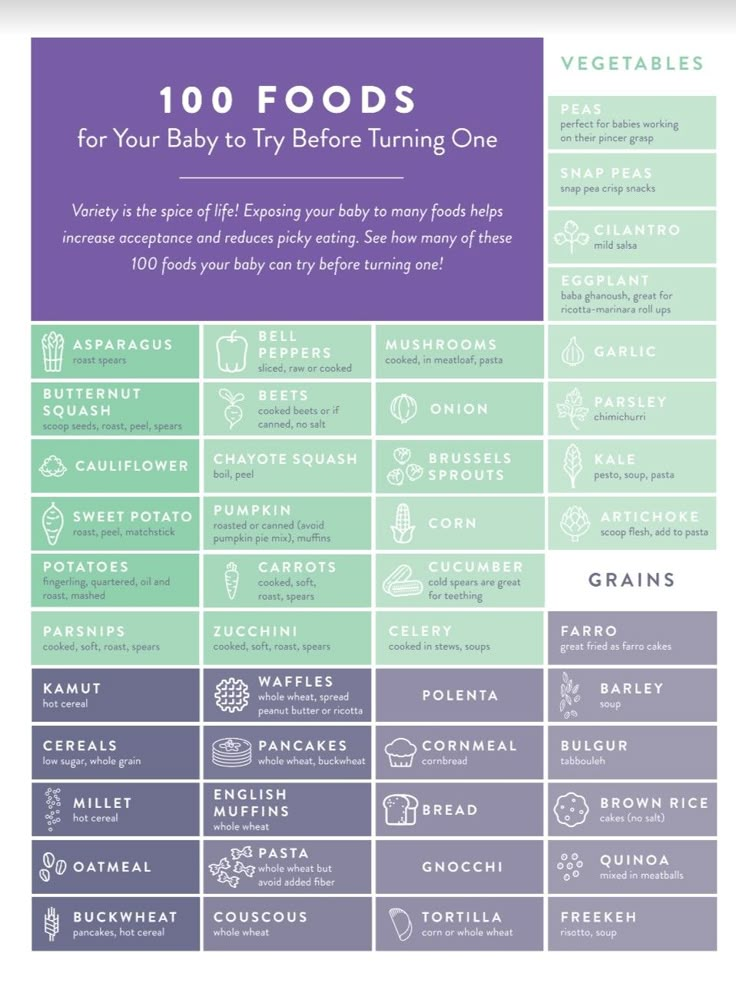 But the meat portion also goes well with a cereal side dish. Then vegetables can be given for breakfast or dinner.
But the meat portion also goes well with a cereal side dish. Then vegetables can be given for breakfast or dinner.
Fruit puree and any fermented milk drink are also suitable for dinner.
What to drink
Plain water is what a child needs to maintain water balance. You can buy bottled baby water or use boiled tap water. In second place are compotes from berries, fruits or vegetables familiar to the baby. Preferably without sugar.
Fruits and berries that are familiar to babies can also be used to make sparse jelly. The drink improves digestion, but since it is very high in calories, it is better not to give it to overweight children.
You should not get carried away with juices, although according to the norms they are allowed to drink 60-80 ml every day. They contain a lot of sugar and this is a disaster for delicate milk teeth. And the juices are rich in organic acids, which irritate the mucous membranes of the gastrointestinal tract.
What not to feed
There are foods on which, in the imagination of parents, there should be a “sign of an outcast”. They are absolutely not allowed in complementary foods. These are any canned foods, pickled vegetables and fruits, smoked meats.
They are absolutely not allowed in complementary foods. These are any canned foods, pickled vegetables and fruits, smoked meats.
Sausages, wieners and other sausages should not be given to a child at least up to three years of age. The same applies to cakes, pastries, chocolate, glazed curds. These are too "heavy" sweets. If you want to pamper your baby with sweets, then it is better to give him dried fruits, marshmallows or marshmallows.
Milk - cow's, goat's - will only bring harm to children under one year old. There is a lot of phosphorus in the product, and the kidneys of a child under one year old do not know how to remove it correctly. As a result, along with phosphorus, the baby loses calcium and vitamin D, and this is dangerous for the development of a severe form of rickets.
Honey sometimes contains spores that cause botulism. They are dangerous only for children under one year old.
It is also a mistake to give the baby dishes with mayonnaise, mustard, horseradish, pepper, vinegar and hot sauces.
How to cook
Baby food can be boiled, steamed, baked and stewed. Fried foods are taboo in baby food.
Vegetables and fruits no longer need to be thermally processed. They can be grated and served as a salad.
Meat can be used to make meatballs and meatballs. Moreover, at the “sculpting” stage, it is permissible to prepare them for several days at once and put them in the freezer. The next time, all that remains is to get the product and heat it.
For juiciness, you can add vegetable puree to minced meat: zucchini, carrots, cauliflower.
At 11 months, pediatricians allow the child to cook soups with meat broth. But when the water boils for the first time, it is advised to drain it. The "primary" broth is too fatty and contains most of the harmful substances that could be in the meat.
You can already add some greens to the soup: dill, parsley. The leaves must first be finely chopped.
It makes sense to add vegetable and butter only to ready meals. Heat treatment deprives them of nutritional value.
Heat treatment deprives them of nutritional value.
Every day you have to cook again. Alas, it is impossible to store dishes for the baby until the next day, otherwise they lose their nutritional value.
Hello, dear readers! Today we will talk about what an 11-month-old toddler should eat. During this period, the baby takes its first steps, even if still holding on to the crossbar or someone else's hand. But these are already such achievements in the life of a little man! The child spends much more energy than before, so there should be more products in his diet, and portions should increase. In the article you can find answers to such questions: what to give a toddler to eat, how much to feed a child at 11 months, what a baby menu can be.
Basic rules of nutrition
If you have a small child in your house, then you need to know and follow all kinds of rules for the upbringing and development of the baby. And here I will also present to you not unimportant rules for the nutrition of children:
- The baby must have five meals a day, which includes two usual feedings (breast milk or an adapted mixture).
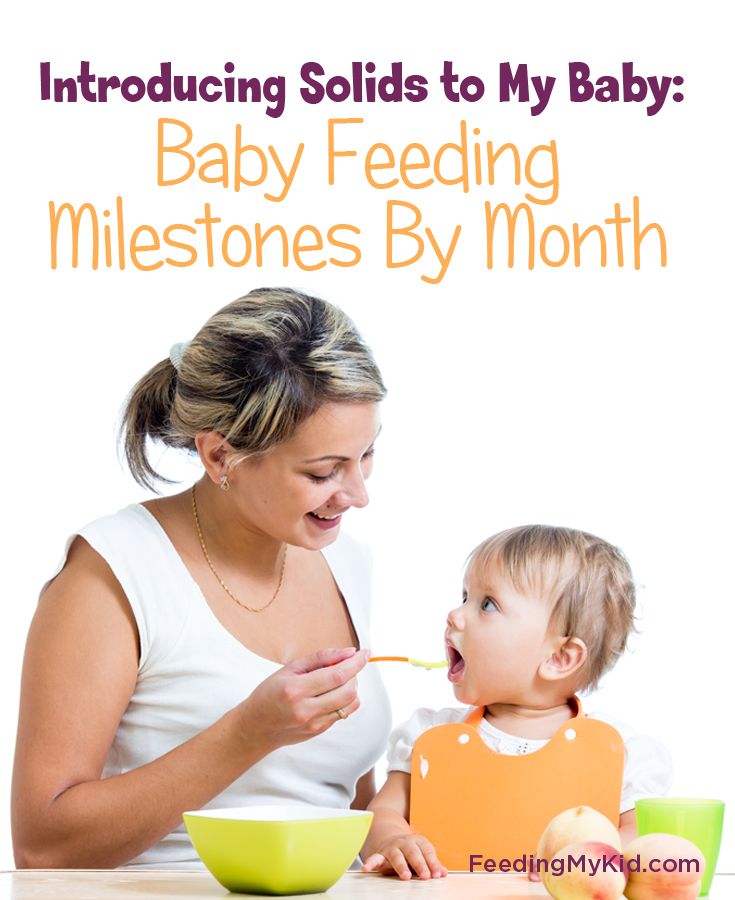
- The child should still not be given fried food. Particular preference should be given to steamed food. This is the best way to keep all the useful substances in the product.
- Minimize sweets, there should be practically no salt in the diet of the little one, and all kinds of seasonings, all the more so.
- The presence of a homogeneous mass in dishes is no longer only not necessary, but rather even superfluous. The child should already get used to more solid food. It is best to knead the dishes with a fork. The kid must learn to chew and develop the jaw.
- It is important that the child's diet includes: cereals, fruits, meat, vegetables, cottage cheese, fish and bread.
- Never force something into a baby's mouth that he has just refused. Don't get angry or shout. Most likely, it just didn't taste good. I am sure that you also have such products that you are indifferent or disgusted with.
- Foods from the so-called allergy risk zone still should not be given: red fruits and vegetables, exotic representatives, citrus fruits, chocolate, nuts, honey.

- Remember that baby milk should be diluted with water. At this age, you can 1:1.
- We should not forget that when we introduce new foods into a child's diet, we should do it slowly and gradually. You need to start with half a teaspoon. And only with a normal reaction of the body, bring to age norms.
- And don't forget to drink. The baby needs to replenish its fluid stores daily. Juices, decoctions, compotes, herbal teas, jelly are well suited for crumbs. And, of course, do not forget about the water itself.
Baby's diet
The baby keeps five meals a day. He still needs breastfeeding (sour milk or adapted formula) in the morning and before bedtime.
Breaks between meals can fluctuate around three to four hours. You already individually adapt to the requirements of the child and to what time he gets up and when he goes to bed. My son had four-hour breaks. He ate at 6, 10, 14, 18 and 22 hours.
To calculate how much food your baby should eat per day, just make calculations based on his weight. This figure in grams must be divided by nine. The answer will be the amount of food consumed. So, for example, my son already weighed 10 kg and 800 grams (10800), which means that he had to eat at least 1200 grams per day. Then you can divide the received answer into 5 meals and find out how much the child needs to eat in one feeding. In my case, this indicator was 240 grams.
This figure in grams must be divided by nine. The answer will be the amount of food consumed. So, for example, my son already weighed 10 kg and 800 grams (10800), which means that he had to eat at least 1200 grams per day. Then you can divide the received answer into 5 meals and find out how much the child needs to eat in one feeding. In my case, this indicator was 240 grams.
What can you feed a baby at 11 months
A baby should have a balanced diet, enriched with all the substances necessary for a growing body. And what exactly is included in his diet:
- Fruits and vegetables, berries. These are irreplaceable sources of vitamins, fiber and pectins. The kid should receive these products in full, corresponding to his age norms. From them you can already prepare different dishes: mashed potatoes, mousses, compotes, juices, jelly, puddings. And even the use of grated fruits in raw form is allowed, but in small quantities.
But do not forget that the baby's menu should not contain red fruits, citrus fruits and exotic representatives.
- Porridge is an obligatory daily product. The most useful is considered to be oatmeal (but better not in the form of flakes). If the baby does not have celiac disease. It is better to cook such porridge on the water, and you just need to flavor the cooked product with oil. However, boiling in milk is also allowed, but do not forget that the baby should not be given whole milk, dilute it 1: 2 with water. Kasha is better to change every day. Buckwheat today, oatmeal tomorrow, rice the day after tomorrow, etc.
- Of course, meat dishes are an important part of a child's diet. It can already be meatballs, steam cutlets, mousses, puddings. Try to give the meat in such a way that the little one tries to chew it on his own. Give preference to rabbit meat, turkey, chicken, veal, young lean pork. I gave my son only rabbit and veal until he was a year old.
- Fish should also be included in the baby's diet. The baby should still avoid the fatty varieties and the red varieties.

- Cottage cheese, yogurt and kefir are important for the proper functioning of the digestive system. You can cook these foods yourself. Feel free to give dishes not only in their pure form, but also with the addition of already well-known fruits.
- Also, the baby can eat eggs, pasta, diet cookies, wheat bread, small amounts of oil are allowed to be added to ready-made meals (both vegetable and creamy), and the amount of salt and sugar should still be minimal.
Minimize your consumption of sweets. The baby is just getting its first teeth, and their development should not be disturbed. And, of course, the child’s diet should not yet contain chocolate, citrus fruits and other allergenic foods.
How can a baby's daily diet be presented? A fairly large number of products are already available to the baby. And what exactly can be the indicative menu of children for breastfeeding and IV? You can read about it below.
Breast-fed babies
- at 6 in the morning and the first thing he reaches for his mother.
- By 10 o'clock the child was already hungry. At this time, give the little one porridge (you can use both milk and water) - 200 grams, no more. You can add 5 grams of oil to it. Also give the baby half the yolk. For dessert, offer the crumbs 50 grams of fruit puree. You can drink everything with compote or juice (50 ml).
- Lunch at the crumbs comes at 14:00. This feeding should be the most satisfying. It may consist of the following dishes: 200 grams of vegetable puree with oil (5 grams), 80 grams of puree, a slice of bread (from wheat flour, 10 grams). You can drink juice in a volume of 60 ml.
- At 18:00 - dinner at the little one. Give him 60 grams of fruit puree, 50 grams of cottage cheese, two biscuits. Let the child drink 200 ml of kefir.
- The last feeding comes before going to bed, at 10 am.
 And it's still breast milk. The baby will drink the volume necessary for full saturation.
And it's still breast milk. The baby will drink the volume necessary for full saturation.
 He's already hungry. The first feeding is still mother's milk (approximately 200 ml). It is still a very important source of nutrients for the development of the baby.
He's already hungry. The first feeding is still mother's milk (approximately 200 ml). It is still a very important source of nutrients for the development of the baby. Formula babies
- Breakfast starts at 6 o'clock. The first feeding is milk formula (200 ml).
- Reception to write between breakfast and lunch falls at 10 am. Feed the little one with any porridge cooked in any form. The baby needs 200 grams. Add 5 grams of butter. For dessert, 50 grams of fruit puree is well suited. Also offer your child half an egg yolk. You can drink food with 50 ml of juice.
- Meat soup (200 grams) is well suited for lunch feeding, which comes at 14:00. In addition, you can give your child 80 grams of vegetable puree, 10 grams of wheat bread. You can drink compote (60 ml).
- For dinner (18:00) give the baby 60 grams of puree (fruit) and 50 grams of cottage cheese. For a snack, give two crackers or biscuit cookies. A child can drink food with kefir (200 ml).
- And finally, at 22:00 hours, be sure to feed the little one with an adapted mixture (200 ml).

Recommended reading:
So we figured out what your child's diet should now be. The peanut is growing, and with it, food preferences are developing. Pamper your little one with a variety of foods. Make sure that he does not get bored, and he does not lose interest in some food. And, of course, you should not give the same thing every day, for example, oatmeal every day and no other cereals. This product will quickly become boring, and the baby will begin to spit on it. Therefore, plan the diet of the little one correctly, taking into account all the preferences of the baby. Try to make the menu varied and unique. May your child grow up healthy!
The menu of a breastfed baby at 11 months is similar to the diet at 10 months.
The baby is still enjoying its mother's milk, and complementary foods are becoming more diverse.
Contents
Properly compiling a diet and including all kinds of foods in the diet, you can please the baby and give him everything he needs for healthy growth.
What should be the diet
The menu already contains the main products, so breast milk in most feedings gives way to complementary foods.
Breastfeeding costs no more than 2 times a day.
If all new products are introduced on time, at 11 months you can start improving the taste of the menu items.
For example, when preparing vegetable and fruit dishes, it is better to use several types of fruits at once.
Babies need variety too. In addition, the more useful ingredients, the richer the dish is in the substances necessary for the body.
Portions of baby cottage cheese are best replaced with a casserole. It will be even tastier if you add fruit.
Variety is also important in drinks. This is especially true in summer. Compotes from different fruits and homemade yoghurts with the same filling will appeal to the baby.
Fruit drinks and jelly from berries will be no less useful.
If the baby has not tried raw fruit before, at 11 months he can definitely be offered such a dessert.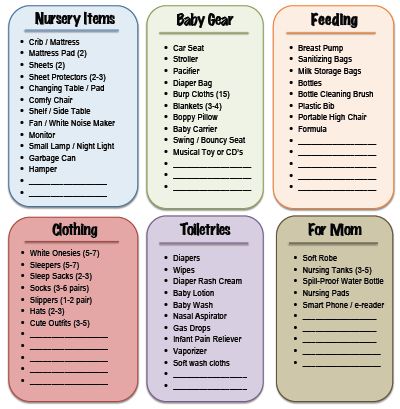
If you add a few ingredients and smear the puree with a little sour cream, the child will surely eat the dish with great pleasure.
What should be the diet
According to WHO standards, at this age, the baby eats 5 times a day. This regimen is also advised by the pediatrician Dr. Komarovsky.
Breakfast and dinner before bedtime consist of mother's milk.
Treat the child with complementary foods three times a day. One feeding should be equal in volume to approximately 250 ml.
Helpful tips for moms: NUTRITION BY MONTH
Feeding should take place at least every 4 hours. There is no need to offer food to the baby at night.
The daily amount of food is calculated according to the algorithm that has been in effect since 9 months.
The weight of the baby is divided by 9. So, on average, a child absorbs up to 1250 grams per day. The maximum one-time volume of products remains the same as in 10 months.
| Vegetable puree | 200 g |
| Fruit puree | 110 g |
| Meat | 80 g |
| Fish | 50 g |
| Yolk | ½ |
| Fruit juice | 110 ml |
| Rusk, biscuits | 10 g |
| Wheat bread | 10 g |
| Porridge | 200 g |
| Curd | 50 g |
| Dairy products | 200 g |
| Vegetable oil | 6 g |
| Butter | 5 g |
1-day baby menu at 11 months
Moms can find a sample menu specially designed for this age.
| 6.00 | Breast milk (200 ml). |
| 10.00 | Milk porridge (200 g) with butter (5 g), fruit (50 g), compote (50 ml). |
| 14.00 | Vegetable puree with cutlet (200 g), vegetable oil (6 g), bread (10 g), kissel (50 ml). |
| 18.00 | Yoghurt (200 ml), cracker (10 g), cottage cheese (50 g). |
| 22.00 | Breast milk. |
Child's Weekly Meal
To buy the necessary products in advance, you can plan the menu for the week. So you can be sure of the variety and nutritional value of the children's diet.
| 6 | Breast milk | Breast milk | Breast milk | Breast milk | Breast milk | Breast milk | Breast milk |
| 10 | Corn porridge (200 g), butter, juice (60 ml). | Multi-cereal porridge (200 g), butter, half yolk, jelly (50 ml). | Semolina porridge (200 g), butter, compote (50 ml). | Buckwheat porridge (200 g), butter, half yolk, juice (50 ml). | Oatmeal (200 g), butter, juice (100 ml). | Millet porridge (200 g), butter, half the yolk, jelly (100 ml). | Rice porridge (200 g), fruit puree (50 g), juice (50 ml). |
| 14 | Soup with meat and vegetables (200 g), apricot (50 g). | Mashed potatoes with liver (200 g), juice (100 ml). | Fish with buckwheat porridge (200 g), berry puree. | Meat soufflé (200 g), fruit puree (50 g). | Soup with meatballs (200 ml), apple and carrot puree (50 g). | Vegetables with fish (200 g), peaches (50 g), juice (50 ml). | Casserole with meat and vegetables (200 g), compote (100 ml). |
| 18 | Yoghurt (200 ml), cottage cheese casserole (50 g), crouton. | Ryazhenka (200 ml), cottage cheese (50 g), biscuits. | Kefir (200 ml), cottage cheese (50 g), fruit puree. | Yoghurt (200 ml), cottage cheese (50 g), cracker. | Kefir (200 ml), cottage cheese (50 g), biscuits. | Ryazhenka (200 ml), cottage cheese casserole (50 g). | Kefir (200 ml), cottage cheese (50 g), apple. |
| 22 | Breast milk | Breast milk | Breast milk | Breast milk | Breast milk | Breast milk | Breast milk |
Prohibitions and catering
Some mothers are so brave that they are ready to offer their baby any foods and dishes. But this is wrong.
The peanut is still not allowed:
- fatty;
- smoked;
- fried;
- adult dairy and fermented milk products;
- nuts;
- citrus fruits.
Before offering a child a questionable product, it is worth remembering the possibility of allergies and other unpleasant reactions.
What is tried for the first time must be given carefully and little by little.
Also recommended:
- pre-feeding;
- teach a child to drink from a mug;
- offer to get acquainted with the spoon and self-feeding;
- do not leave the child with food and drink alone.
The baby is getting older. He is already familiar with adult dishes that he can eat not only in the form of mashed potatoes.
How to feed a child at 1 year old? Balanced baby nutrition: sample diet
Proper nutrition of a child in a year is an important condition for harmonious growth and development. In addition, a properly composed diet helps to strengthen the immune system. Receiving new products, the baby gradually gets acquainted with the diet. Pediatricians advise paying attention to the child's diet, its proper balancing.
Nuances of nutrition
The diet of a child in 1 year is subject to the following principles:
- should be complete, meet all the needs of the body, provide vitamins, micro- and macroelements;
- diversity.
 As many combined foods as possible should be present in the diet daily;
As many combined foods as possible should be present in the diet daily; - all food must be chopped.
Specialized foods must be included to properly balance the diet. They should be designed according to the needs of the child's body in a year. If you have any doubts or questions regarding the nutrition of your baby, you can seek advice from our doctors. They will remotely select an individual diet, tell you about all the nuances of the nutrition of one-year-old babies.
The diet must not be violated
The most advantageous is the diet according to the schedule. An individual nutrition program contributes to the rapid accustoming of the child to the daily routine. Even intervals between meals will not let the baby get hungry. According to the WHO, a child's diet at 1 year old should include breakfast, lunch, dinner, and an afternoon snack.
Meal plan for the day:
| Name | Description |
| 9. | If the child gets up early, in this case it is permissible to feed an hour earlier. All other meals are shifted by an hour |
| 12.30 - lunch | Before dinner, it is recommended to take a walk, which will increase the appetite. For long walks, a snack is allowed two hours before the main meal. |
| 16.30 - afternoon snack | The amount of food is small. Eating easy |
| 19.00 - dinner | Dinner is served on the table two hours before bedtime. |
Important! When preparing food, it is necessary to refuse zazharki, fatty and fried foods. The first meat broths merge. Salt and sugar are added in a minimal amount.
Which products to prefer
WHO recommends including the following foods in the children's menu:
- dairy products.
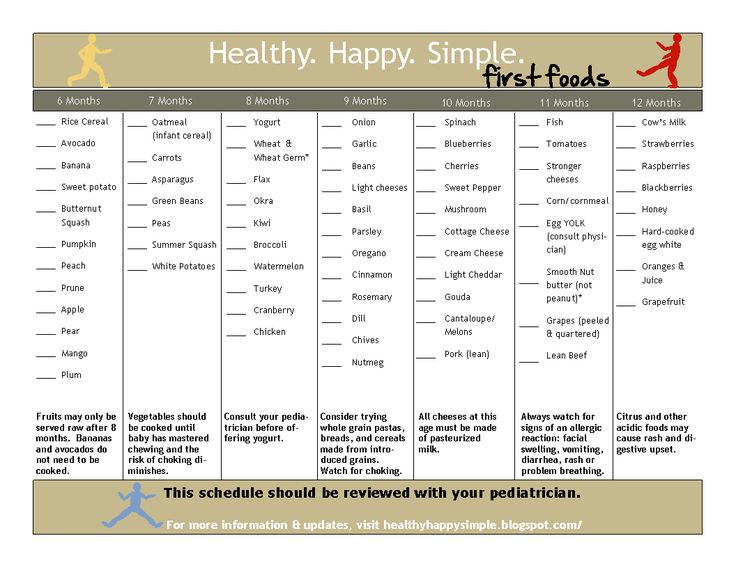 Children under the age of one year do not give milk in its pure form. It is replaced with breast milk or mixtures. Kefir and yogurt are introduced gradually. Their fat content should not exceed 3.2 percent. Sour cream and cheeses are allowed to be given no more than twice a week;
Children under the age of one year do not give milk in its pure form. It is replaced with breast milk or mixtures. Kefir and yogurt are introduced gradually. Their fat content should not exceed 3.2 percent. Sour cream and cheeses are allowed to be given no more than twice a week; - cereals. Porridge for a one-year-old child is given only for children. Adult coarse cereals are poorly digested in the baby's body. Allowed: oatmeal, buckwheat, millet, corn, rice porridge;
- vegetables fruits. By the age of 1, the child is familiar with apples, pears, bananas, prunes, zucchini, broccoli, carrots, potatoes. After a year, kiwi, beets, peas, apricots, beans are introduced into the diet. Legumes are given twice a week. The rest of the vegetables and fruits are allowed for use every day;
- meat fish. Hake, pollock, cod are given twice a week, low-fat meat varieties - daily;
- oil. Butter and vegetable oils are added to ready meals. If the child already chews well enough, it is permissible to smear butter on bread.
 vegetable oils are chosen only unrefined;
vegetable oils are chosen only unrefined; - eggs. Up to a year it is allowed to introduce quail eggs, after a year they give chicken no more than three times a week.
Case study: One-year-old Pasha's mother made the following menu for him for the day, which she plans to feed him until he is 1.5 years old: For breakfast, porridge/vegetable dishes, cottage cheese 200 g, drink 100 ml. Lunch consists of salad - 30 g, soup - 50 g, second meat course - 50 g, vegetables / cereals - 70 g, compote - 100 ml. For an afternoon snack, mom offers ryazhenka or kefir - 150 ml, cookies, crackers - 15 g, juice, fruits - 100 g. For dinner, cereals / cottage cheese / vegetables are served - 180 g, fermented milk products - 100 ml, fruits - 50 g.
Further, the weight of the products will gradually increase with the age of Pasha. Mom made up the optimal variant of the diet together with specialists.
Prohibited products for children from the year
The list of products not recommended for baby food includes:
- any kind of sausages, sausages;
- fried food;
- smoked meats;
- exotic vegetables, fruits;
- caramel, chewing gum;
- products containing flavor enhancers, dyes; flavors.

Children are limited in food with a lot of cholesterol, nuts. The latter can cause an allergic reaction. It is not advisable to give mushrooms, as they overload the child's digestive tract. For all questions, you can contact our doctors at any time of the day. They will remotely adjust the diet and help balance it.
Norm of food per day for a one-year-old child
The total daily calorie content should not be less than or more than 1300 Kcal. However, these figures are relative, as each child is individual. Someone develops quickly, and someone vice versa. And such children may need a supplement in the diet.
For breakfast, babies should consume at least 300 ml, for lunch - 420 ml, for an afternoon snack - 180 ml, for dinner - 300 ml.
Dr. Komarovsky advises to purchase only seasonal products. In his opinion, they will be able to provide the maximum benefit for the growing body of the child.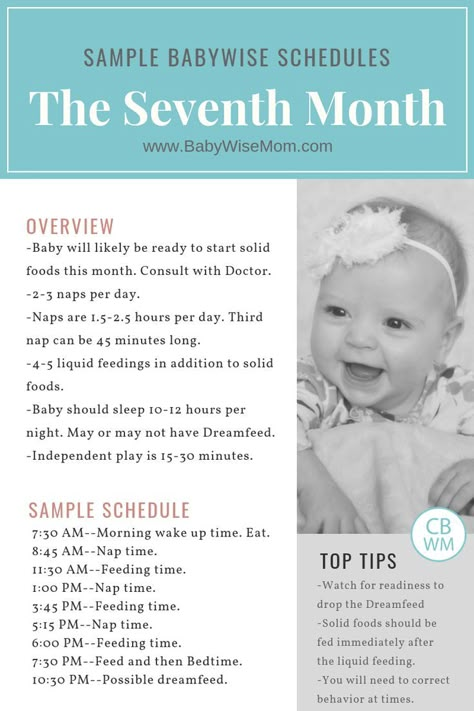
One year old baby menu for every day
Experienced doctors recommend feeding the baby up to 6 times a day. There should be 4 main meals.
Breakfast
In the morning, it is preferable to give milk porridge. Milk is diluted with water before use. Proportions for cereals: 200 ml of milk per 2 tablespoons of cereals. Twice a week it is permissible to serve an omelet from 1 egg. Prepare an omelette for a couple. You can add dill. It stimulates digestion. Wash down with compote, weak tea.
Snack
Yogurts and fruit purees are allowed here. They stimulate the production of gastric juice, digestion. A healthy snack is a baked apple with cookies. Fruit purees from jars, children's drinking yogurts are suitable.
Lunch
Lunch is the main meal. It can be only the first or second course, or maybe all together. Soups are cooked thick, rich, satisfying. Broths are prepared on boneless pulp. The first is drained, and vegetables are added to the second broth. Let's add some oil. The second offers cereals on the water, vegetables, salads, meat or fish. Spices, roasts are excluded.
Let's add some oil. The second offers cereals on the water, vegetables, salads, meat or fish. Spices, roasts are excluded.
High tea
For a small snack, cottage cheese casseroles, milk porridges, cheesecakes, cookies with compote, milk are suitable. Cow's milk is administered with caution. Start with small amounts, diluted with water. Observe the reaction, as cow's milk is considered an allergen.
Dinner
Dinner is scheduled five hours after the afternoon snack. Vegetable puree, porridge, stew with meat or fish are served. It is allowed to add a little oil to the stew.
When breastfeeding, the second dinner is allowed in the form of mother's milk. Children who are used to eating at night are gradually weaned from night feedings.
What to consider when formulating a diet
The nutrition of a one-year-old child should be in compliance with the regimen. You can also create a kind of ritual that will look like a joint table setting, decoration with bright napkins, original food serving.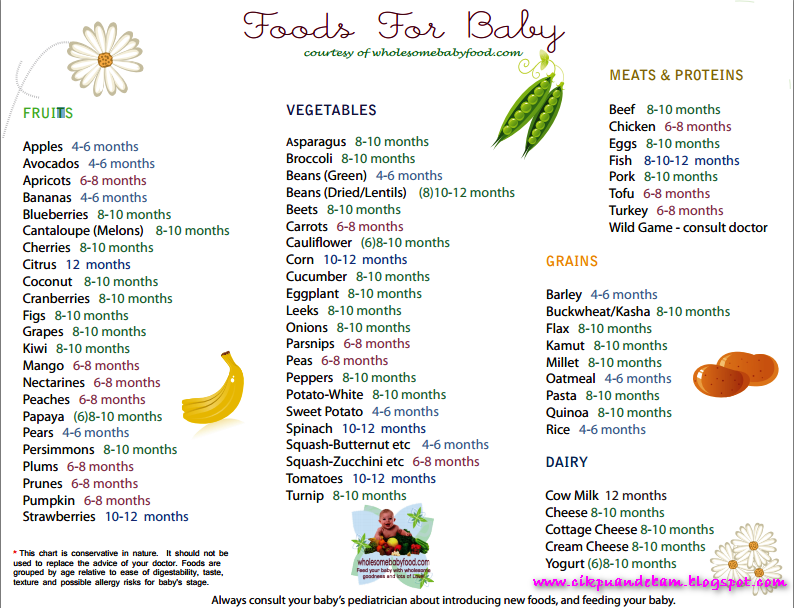
If for some reason the child refuses to eat this or that product, he is not completely excluded from the diet. It is recommended to add it in small quantities, mixing with the main dish.
If the baby refuses to eat, it is recommended to shift the time. Perhaps the child did not have time to get hungry. Or you can go for a walk and work up an appetite.
All meals are served in turn. Don't put everything on the table at once. In this case, the baby will be confused, will try to try everything at once.
It is necessary to introduce new products with caution, in turn, starting with small portions. At the same time, the reaction of a small organism to innovations is closely monitored. In case of allergic reactions, the product is completely excluded.
Sweets in the form of confectionery, sweets, chocolate are not offered to kids. Small amounts of honey, syrups, jams, dried fruits, cookies are allowed.
FAQ
What must be present in the menu of a child at 1 year old?
+
The diet must be present: meat, dairy products, fruits, vegetables, bread, butter. Fish and eggs are given up to three times a week.
Fish and eggs are given up to three times a week.
What are the most common mistakes parents make when preparing meals?
+
The most common mistake is a monotonous diet, consisting of the same products. It is important to try to feed your baby a variety of foods. This will allow him not only to get acquainted with new products, but also to replenish the stocks of necessary substances.
Is it permissible to include solid food in the diet if the teeth erupted a little?
+
Solid foods help form healthy eating habits. In addition, it is useful for teething. Hard pieces help form the correct bite.
Should I put my baby to sleep after eating?
+
After eating, the baby is drawn to sleep. However, putting him to bed right away is not right. If the child walked a lot, spent a lot of energy, in this case, yes, it is allowed to sleep after eating.

 00 - breakfast
00 - breakfast 